Ralph Eugene Meatyard
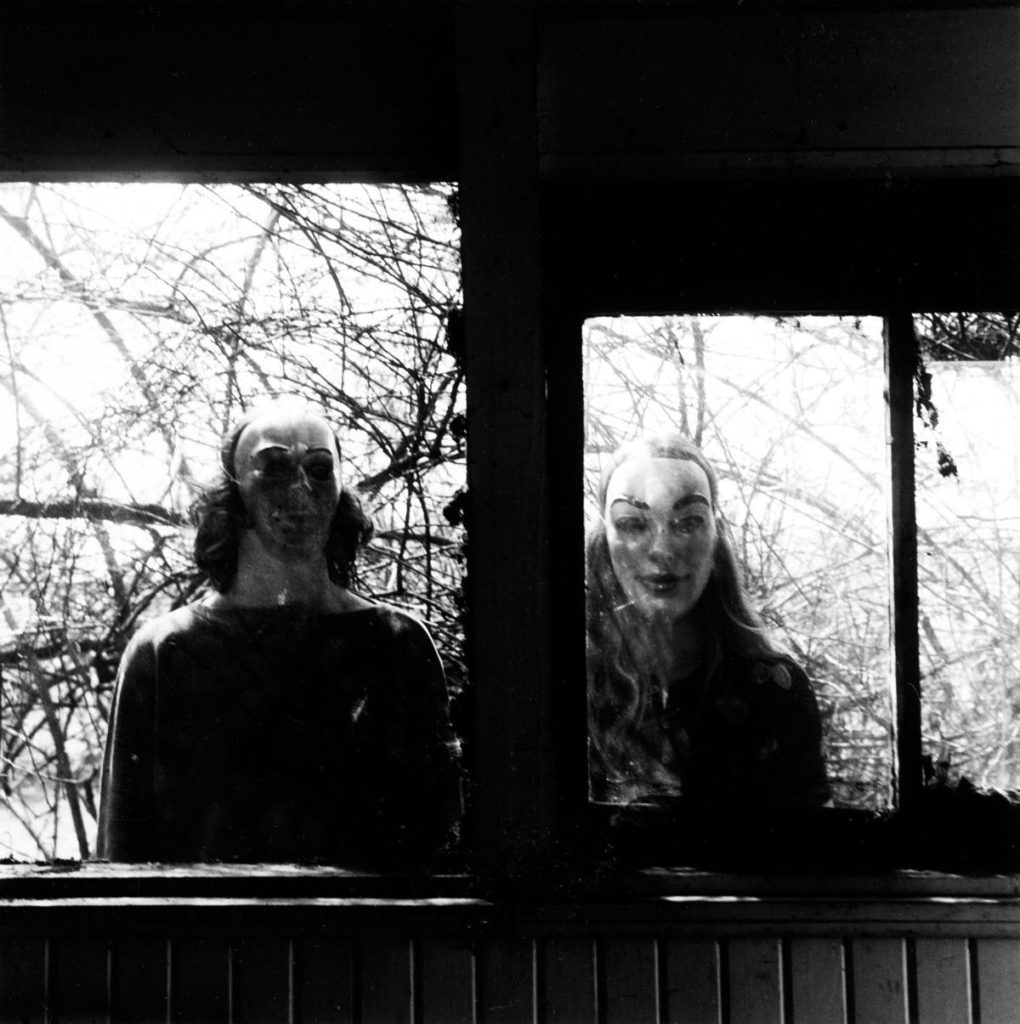
Untitled – 1971 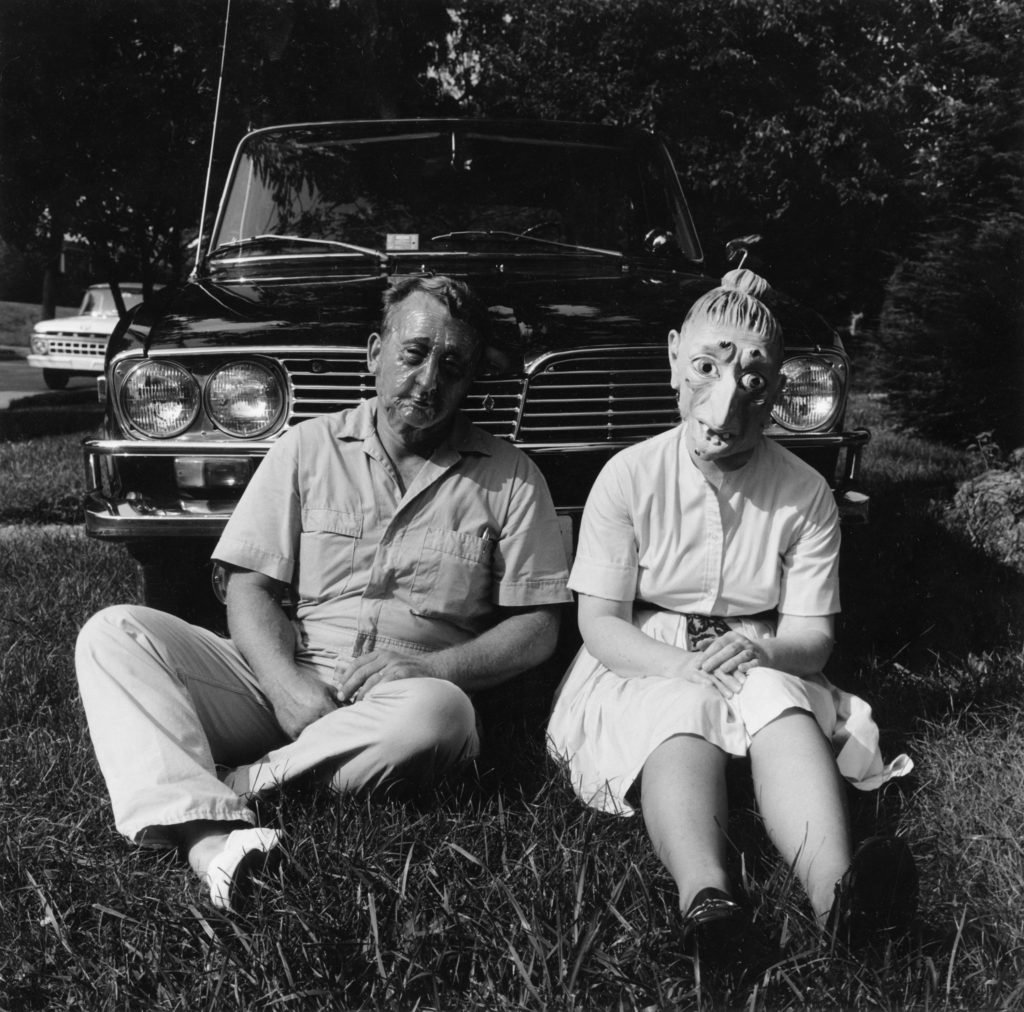


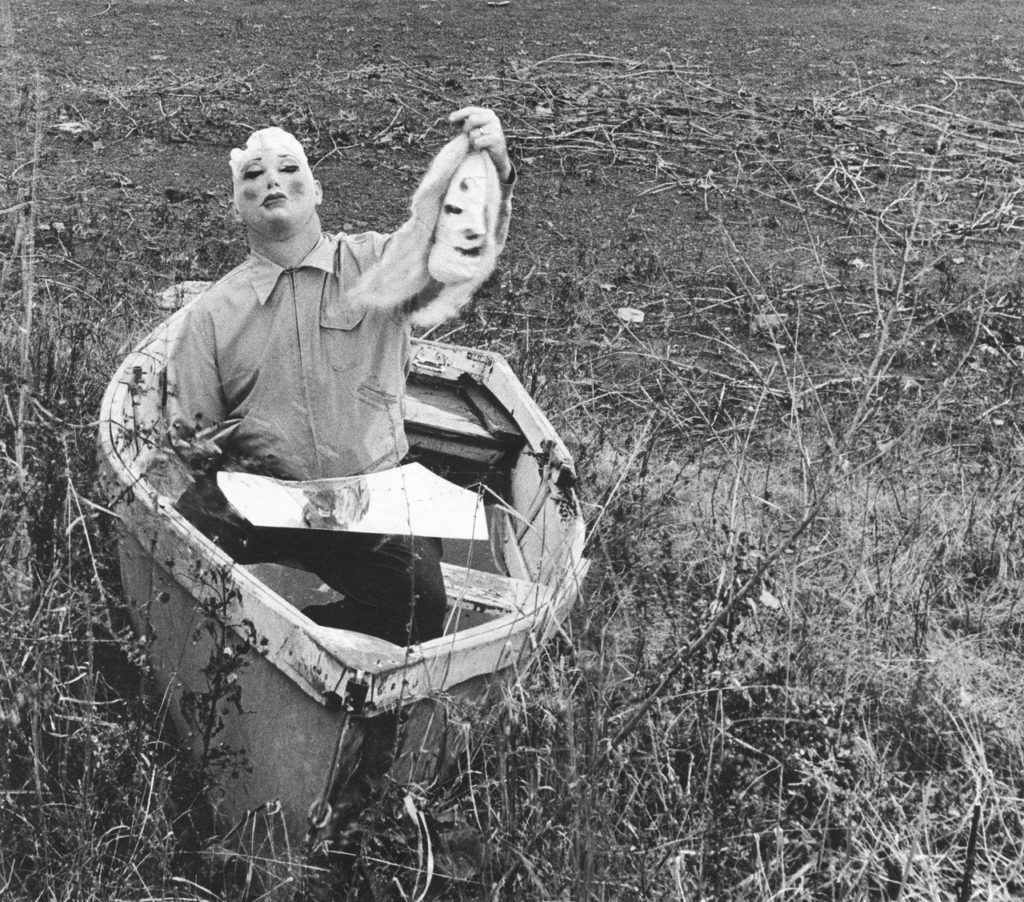
Untitled – 1957-58 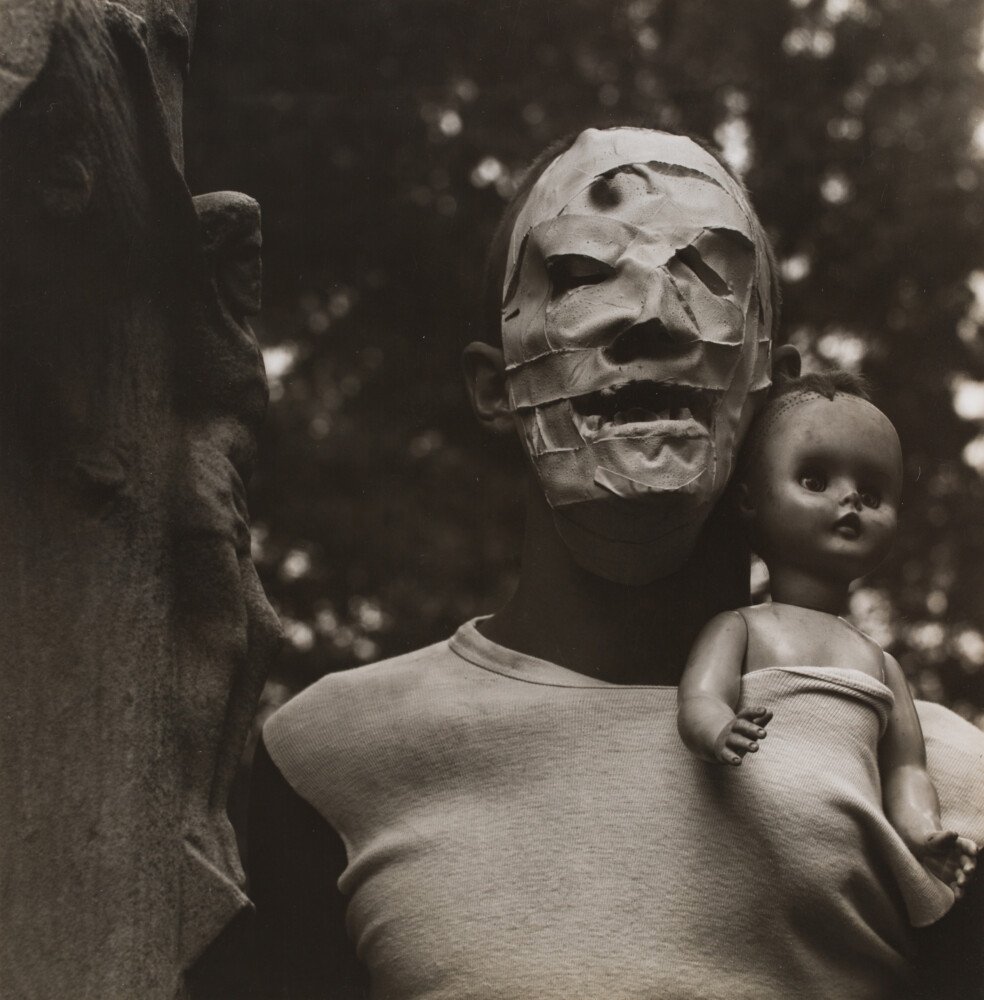
Ralph Eugene Meatyard lived in Lexington, Kentucky, where he made his living as an optician while creating an impressive and enigmatic body of photographs. Meatyard’s creative circle included mystics and poets, such as Thomas Merton and Guy Davenport, as well as the photographers Cranston Ritchie and Van Deren Coke, who were mentors and fellow members of the Lexington Camera Club.
Meatyard’s work spanned many genres and experimented with new means of expression, from dreamlike portraits, often set in abandoned places, to multiple exposures, motion-blur, and other methods of photographic abstraction. His best-known photography featured dolls and masks, or family, friends and neighbours pictured in abandoned buildings or in ordinary suburban backyards.
I have chosen him as I really like how surreal his photography looks. It captures a really unusual sense of reality and captures a creepy setting which i am particularly interested in. I especially like the inclusion of masks as they make the entire feel slightly more eerie.
Claude Cahun
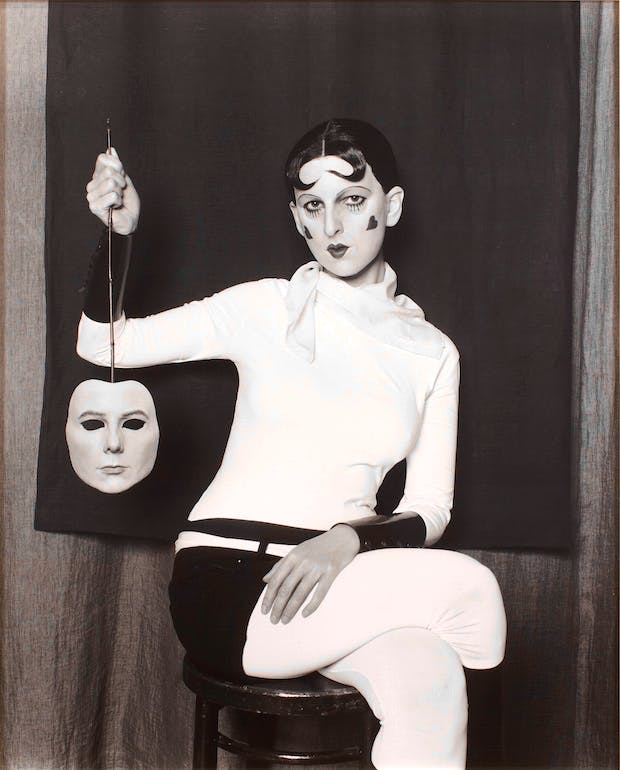
Me as Cahun Holding a Mask of My Face by Gillian Wearing – 2012 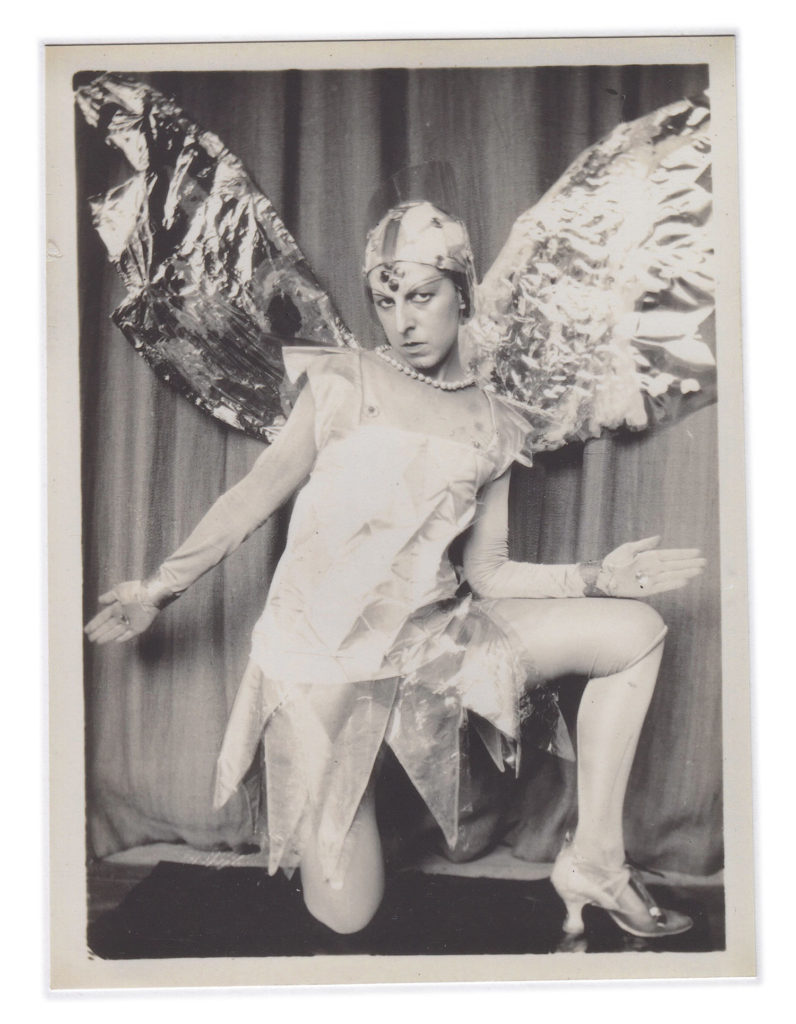
Untitled – 1929 
I Extend My Arms – 1931 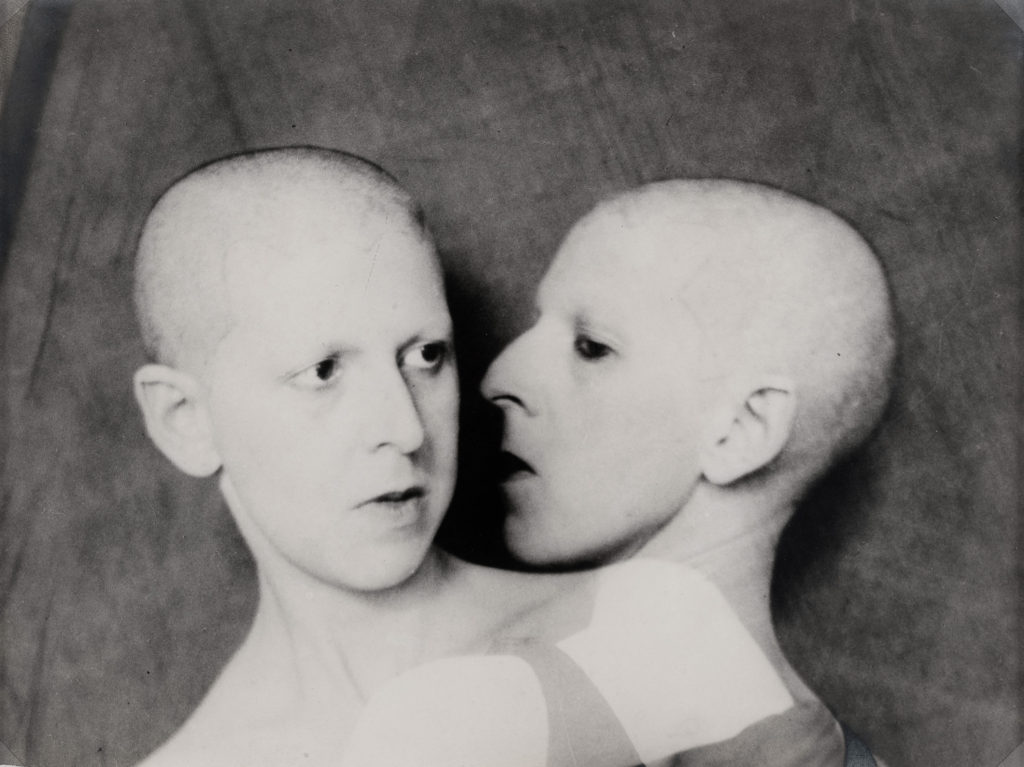
“Que me veux-tu?” – 1928
Claude Cahun, born Lucy Schwob was a French photographer, sculptor, and writer. She is best known for her self-portraits in which she assumes a variety of personas, including dandy, weight lifter, aviator, and doll. They created some of the most startlingly original and enigmatic photographic images of the twentieth century. Prefiguring by over seventy years many of the concerns explored by contemporary artists today, the importance of her work is increasingly recognised.
While many male Surrealists depicted women as objects of male desire, Cahun staged images of herself that challenge the idea of the politics of gender. Cahun was championing the idea of gender fluidity way before the hashtags of today. She was exploring her identity, not defining it. Her self-portraits often interrogates space, such as domestic interiors and Jersey landscapes using rock crevasses and granite gate posts.
She used her work to challenge notions of identity and gender with androgynous self-portraits that bring to life an array of characters. In one, she’s a bodybuilder holding barbells and hearts drawn on their cheeks; in another, she’s a lady of the manor swathed in velvet. Her work is a playful clash of the masculine and feminine, but also a critique of the societal norms she spent her life refusing to adhere to. Cahun believed that gender was transmutable. Assuming different identities was her forte, and she regularly performed in avant-garde theatre in 1920s Paris.
“Under this mask, another mask; I will never finish removing all these faces.” – Claude Cahun
I particularly enjoy the way this photographer presents themself by their use of clothing choice, props, appearance and setting altogether to present gender identity experimentation.
Rosita Delfino
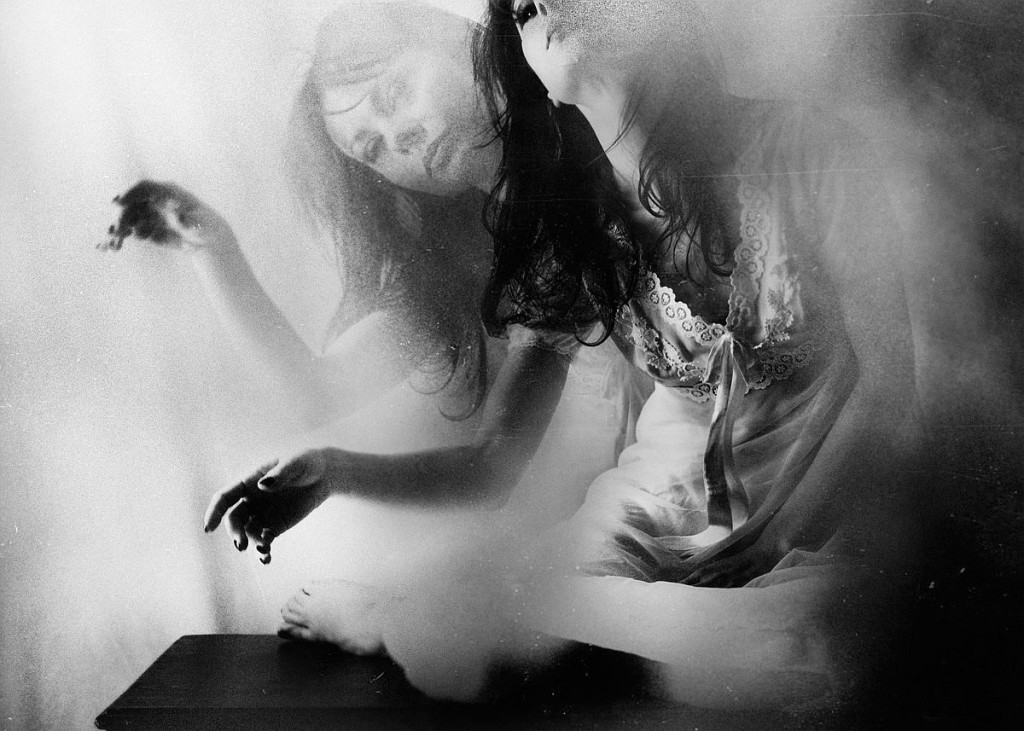
Part of a collection named metamorphosis
“Photography is a dimension where pictures enhance the words and become means of expression of our inner world, through the filter of our eyes they have the power of changing the reality.” – Rosita Delfino
Rosita Delfino is an Italian photographer who captures quite surreal images and was emotionally involved by the great power of images in communicating and amazingly evoking words, alongside with the innermost expressions of the soul. She believed that only images can transform objective reality into a new creation giving voice to the individual secret world. An endless dialogue between appearing and being, a charming journey into women’s visions, where the body goes beyond space and time to plunge into a dreamlike dimension.
I chose this photographer as I enjoy her blurry images to create a very uncanny sense to the piece, implying a chaotic setting that comes off as looking very unsettling. I enjoy the use of overlapping images so that the concept looks way more hectic and overwhelming not just to people admiring these images, but also to the model in the photograph.
Lara Gilks
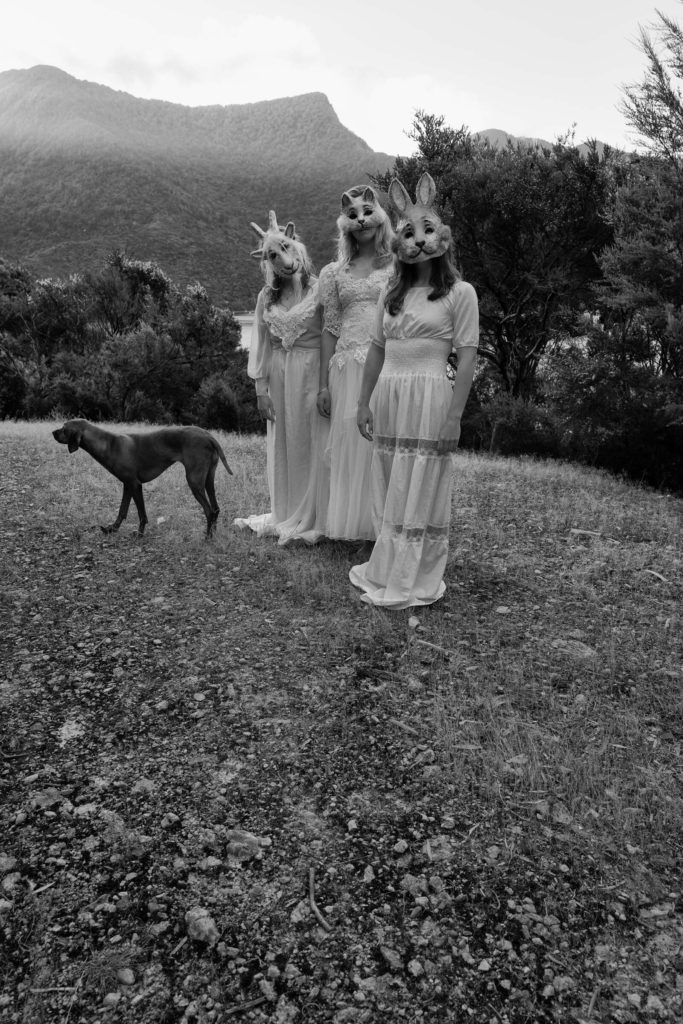
new work and single images 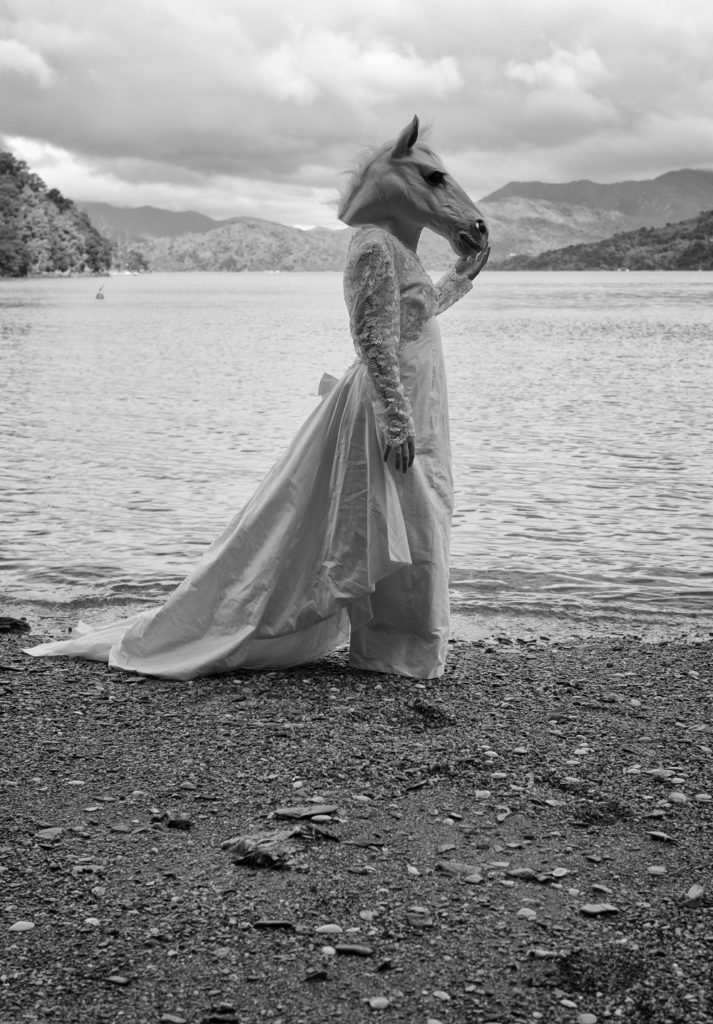
white lies 
the backyard theatre 
the backyard theatre
Lara Gilks is a photographer based in Wellington, New Zealand. She utilises the elements of nature, water, light, beauty, in the context of the dreamscape between two worlds. She explores that dreamscape through the themes of metamorphosis, mortality, escapism, ascension, peace, silence.
She tends to compose a series of images in a collection and gives them names such as “the backyard theatre”, “white lies”, “new work and single images” and many more.
One of her collections – the backyard theatre, she tend to use her backyard as the set and this was where she composed most of her photographs. She stated that “It is barren, cold and the props create tension. I focus on the characters – they are disguised, obscured – they taunt, spook and challenge the traditional sense of a backyard scene.”
I chose this artist as I particularly enjoyed the uncanny images she was producing where the models wore masks. I particularly like how disturbing the animal ones look as they give off a creepier atmosphere for the photograph. I love the use of masks in any form of art whether it be photographs or paintings, as they create a very intriguing piece, wanting others to wonder what’s hiding behind it.
Diane Arbus
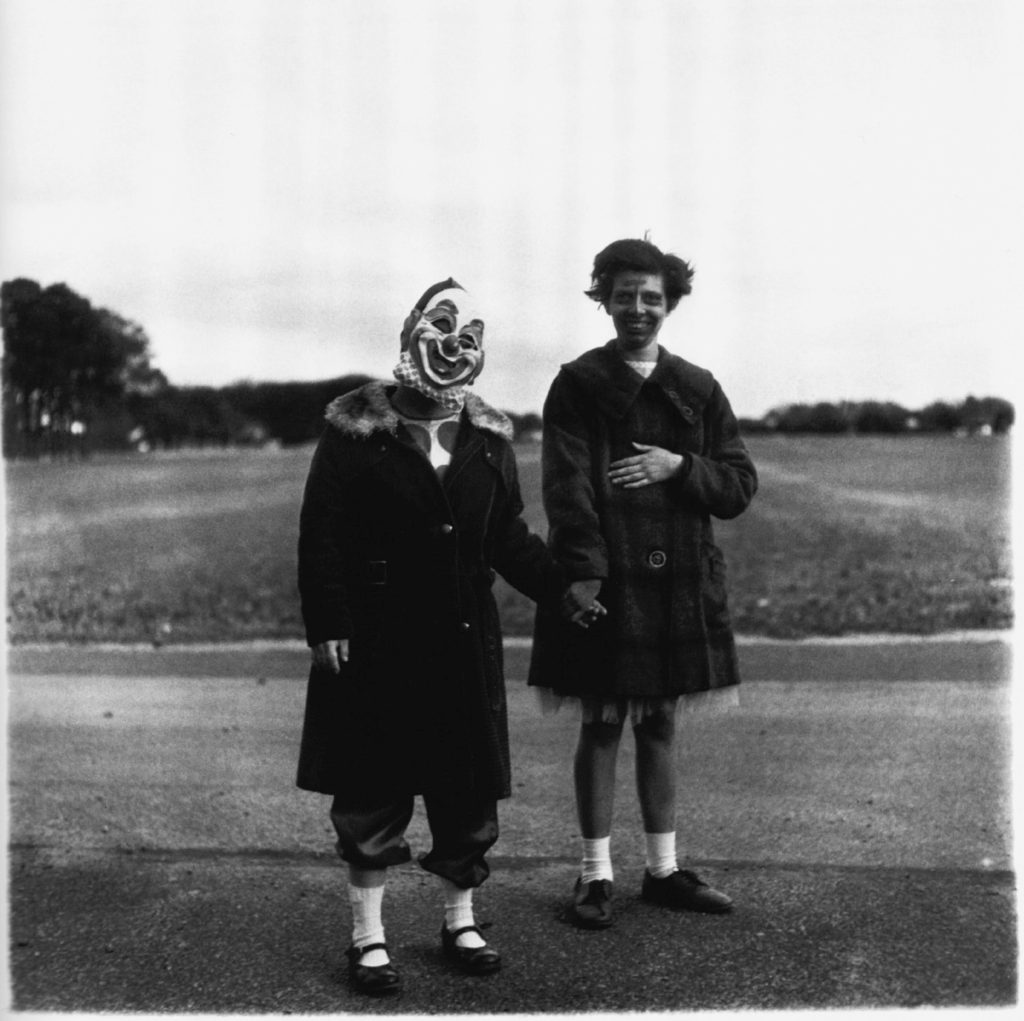
Untitled – 1970-1971 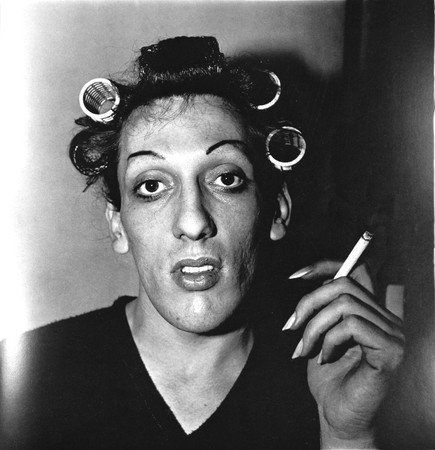
“We’ve all got an identity. You can’t avoid it. It’s what’s left when you take everything else away.” – Diane Arbus
Diane Arbus was an American photographer best known for her intimate black-and-white portraits. Arbus often photographed people on the fringes of society, including the mentally ill, transgender people, and circus performers.
Interested in probing questions of identity, Arbus’s Identical Twins, Roselle, New Jersey (1967), simultaneously captured the underlying differences and physical resemblance of twin sisters. “A photograph is a secret about a secret. The more it tells you the less you know,” she once mused.
I chose this artist as I loved the way each of her pieces were composed. From the settings, to the props, to the meaning behind the piece, everything catches my attention. The repetitive ominous field of each piece intrigues me a lot.

Identical twins 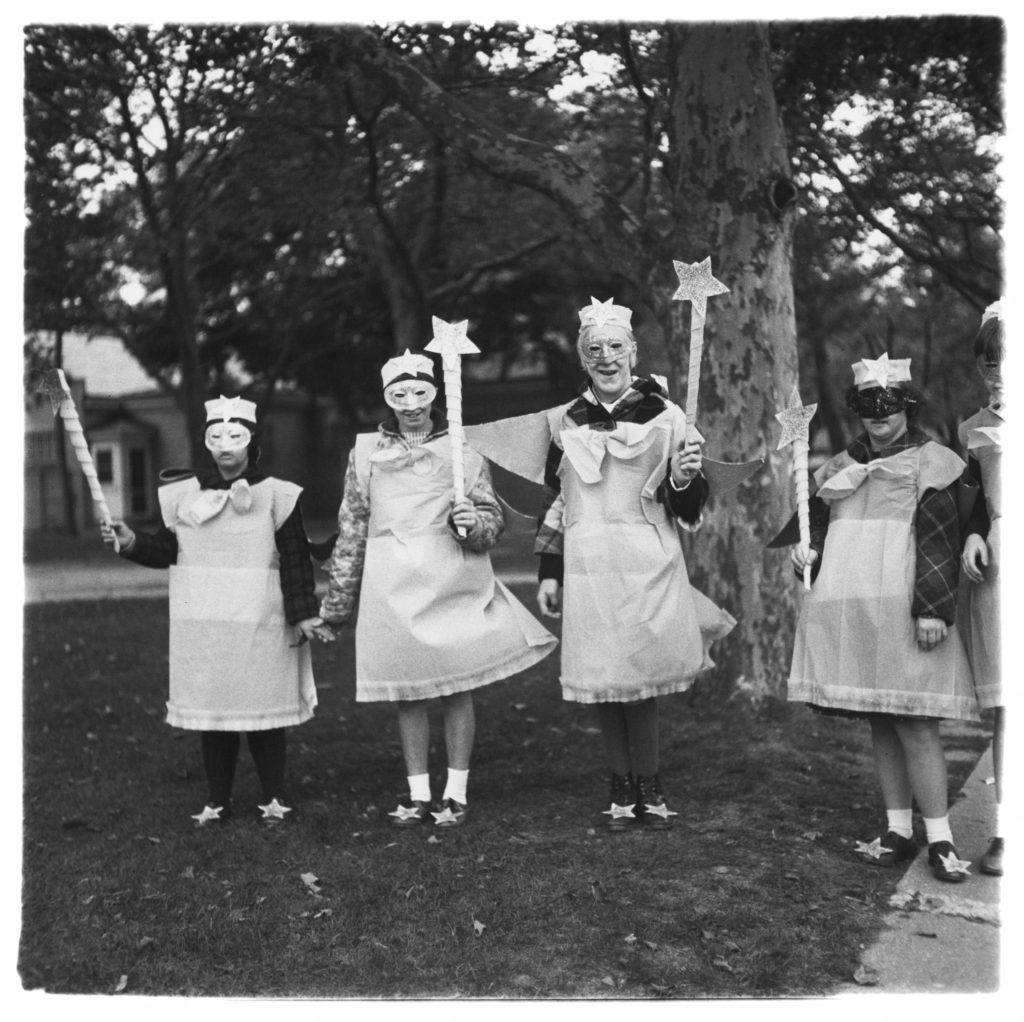
Untitled – 1970-71
My own analysis
As you can see from all the artists I’ve chosen as inspiration, they all tend to include masks as their focal piece for the photograph. I have a real interest in the idea of using this prop and what sense it gives off for the whole piece. It provides a compelling meaning as the model is using it as a way to hide their true self.

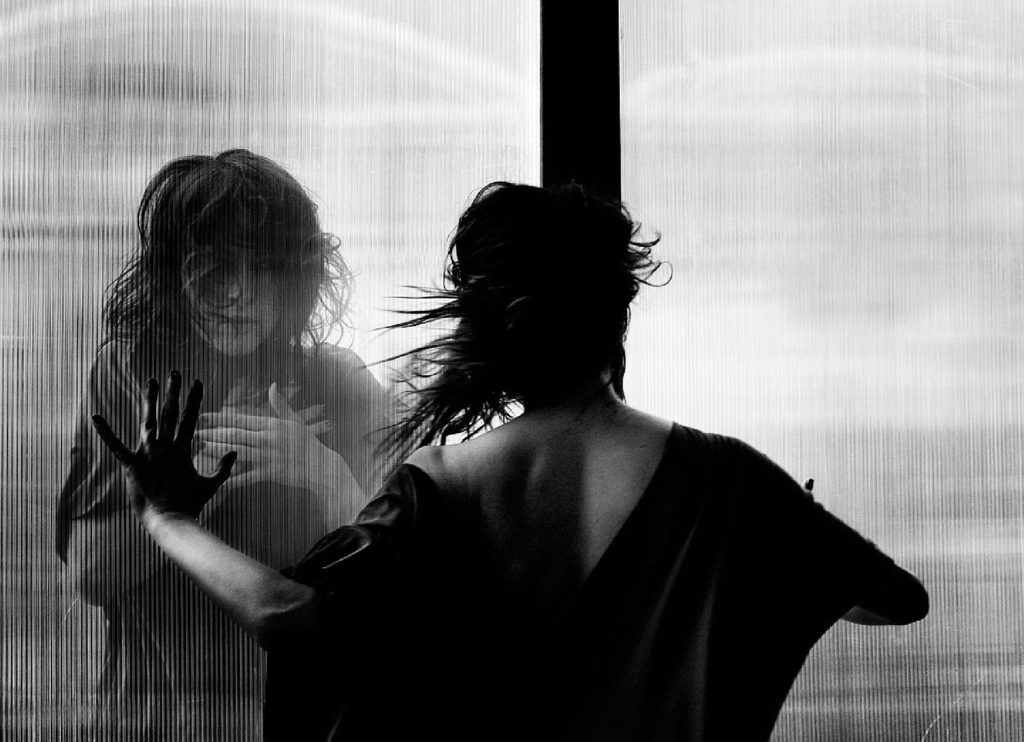
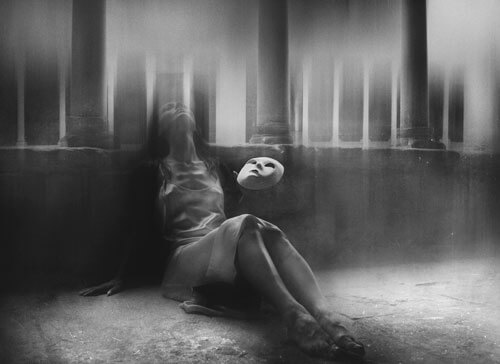
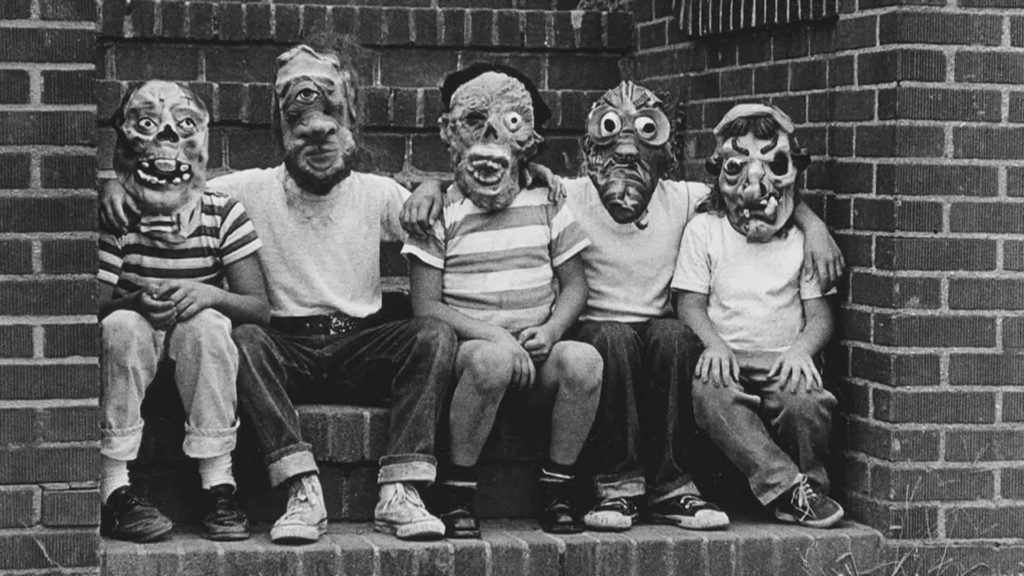
Great start…you can also explore Tableau Photography, which often involves a kind of theatrical approach to stage-setting, use of props, costumes and may respond to myths, stories, old paintings that tell biblical stories and more…
https://www.tate.org.uk/art/art-terms/t/tableau
I think you would like the work of Gregory Crewdson for example…and maybe Philip-Lorca diCorcia too, as well as Cindy Sherman as they have a cinematic feel to their work